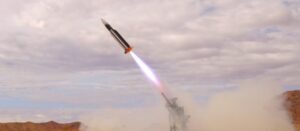韩国公布新型L-SAM拦截系统,将替代美制防空装备

快速阅读: 韩国开始量产L-SAM防空导弹系统,计划出口中东及波兰、澳大利亚等国,以替代美制SM系列导弹。该系统由LIG Nex1开发,具备高机动性和多目标拦截能力,增强韩国自主防御和出口竞争力。
Mass production of the system has begun, and the Republic of Korea is actively developing a naval variant to replace the U.S.-supplied SM-series missiles. Export discussions are reportedly ongoing with Middle Eastern countries, and Seoul has ambitions to offer the system to Poland, Australia, the Philippines, and several Northern European states. A significantly enhanced successor, the L-SAM-II, is already under development.Developed by LIG Nex1, the AAM is part of a flexible multi-missile configuration that allows the L-SAM launcher to simultaneously field both ABM and AAM canisters on the same platform. Hanwha Aerospace leads the production of the ABM missile, while Hanwha Systems is responsible for the system’s large active electronically scanned array (AESA) radar. From a technical standpoint, the newly introduced AAM is designed for high-speed, long-range interceptions in both air and missile defense roles. The L-SAM missile is estimated to have a range exceeding 150 kilometers, with flight speeds between Mach 4 and Mach 5. It is believed to utilize a two-stage propulsion system, with a solid rocket booster followed by a high-energy second stage sustaining flight in the upper atmosphere. The guidance package is expected to combine inertial navigation with datalink mid-course updates and an active radar seeker for terminal homing, providing high accuracy against highly maneuverable targets in contested electromagnetic environments. Its ability to engage targets in both the endoatmospheric and near-exoatmospheric domains enhances its versatility. The vertical launch system ensures omnidirectional engagement without the need for mechanical launcher alignment, reducing engagement latency and broadening coverage. The L-SAM’s AESA radar, with a reported detection range of up to 600 kilometers, provides long-range tracking and fire control support to both missile types, enabling simultaneous multi-target engagements.
Compared to established systems such as the U.S.-built PAC-2 GEM-T and the naval SM-2 Block III/IIIA, South Korea’s L-SAM AAM presents a more modern, integrated approach. The PAC-2 GEM-T, while a proven system with high lethality against tactical ballistic missiles and aircraft, relies on older radar architecture and semi-active radar homing, which require continuous radar illumination. The L-SAM AAM, by contrast, leverages active radar homing for fire-and-forget engagements, allowing for faster reaction time and increased survivability of the launch platform. The U.S. SM-2 family, although similarly effective and networked, is limited to naval platforms and does not offer the modularity or launcher commonality that the L-SAM architecture provides. Moreover, while systems like the Israeli David’s Sling and the European SAMP/T NG are competitive in the same category, the L-SAM offers a uniquely Korean solution with comparable performance, integrated ABM functionality, and potential cost advantages due to local manufacturing.
In terms of operational and tactical impact, the dual-load capability of the L-SAM launcher introduces significant strategic flexibility. With the ability to load a mix of ABM and AAM interceptors in a single launcher, defense planners can tailor batteries to specific threat environments, be it saturation attacks by cruise missiles, swarm drone incursions, or medium- to high-altitude ballistic missile strikes. The AAM’s active seeker and autonomous engagement capability enable decentralized operations in electronically degraded environments. Its long reach allows it to form the upper tier of an integrated air defense network, working in conjunction with shorter-range systems like KM-SAM (Cheongung II) and even point-defense assets such as the Korean Iron Dome (C-Dome). In mobile configurations, the L-SAM can support forward-deployed units and protect high-value assets such as airbases, command centers, and logistics nodes. The AESA radar’s multi-target tracking capability further ensures coverage against complex air threats, including low-RCS targets like stealth aircraft and hypersonic glide vehicles.
The strategic and geopolitical timing of this demonstration is also highly significant. With North Korea accelerating the frequency and complexity of its missile tests, including IRBMs and maneuvering reentry vehicles, South Korea faces growing pressure to establish a credible layered missile defense architecture independent of foreign systems. Simultaneously, China’s assertive air and naval operations in the Yellow Sea and East China Sea continue to strain the security environment, prompting South Korea to boost its deterrence posture. The unveiling of a domestically produced missile capable of replacing legacy U.S. systems signals a turning point in South Korea’s defense policy, toward greater autonomy and industrial sovereignty. It also aligns with broader regional shifts, where countries like Japan, Australia, and India are modernizing their air and missile defense infrastructures in response to evolving threats. By promoting the L-SAM as a viable export product, South Korea also seeks to position itself as a major player in the global air defense market, challenging traditional suppliers while strengthening diplomatic and security ties through defense cooperation.
In conclusion, the integration of a high-performance AAM into the L-SAM platform represents a major advancement in South Korea’s missile defense strategy. It enhances both homeland defense and potential expeditionary applications, while providing a cost-effective and technologically competitive alternative to traditional Western systems. As the L-SAM family evolves, it will play an increasingly central role in South Korea’s defense posture and its ambitions as a defense exporter on the global stage.
(以上内容均由Ai生成)







